
In the last post I introduced the idea that certain members of an armed contingent called the Gododdin, which marched from the Lothians to the Battle of Catreath in 600 AD, had connections to East Lothian. We observed Elphin–Elphinstone, Rhuvawn-Ravensheugh & Gwid-Kidlaw, all of which were connected to Iron-Age fortresses or burial centers. In the same fashion, I would like to introduce an idea that the 6th century warrior known as Dremrudd was once a warlord at an outstandingly impressive & fabulously well-preserved hill-fort called the Chesters, only a stone’s throw away from the village of Drem. The stanza in which he is found in Y Gododdin (my translation) reads:
Ye Kings stand firm twyx Dremrudd’s ruddy glances,
Whose purposes times pillages obscure,
Men plough the seas with pure impunity,
Of these, the palest first is satisfied,
A wee bit crazed & yet his crown complete,
Before him garden-cover’d, Gownddelw,
Right worthy, lived as tall as did Maelderw,
Wielded his spears as such we bards must praise
How his soul-strength pervaded many lands


I like late January, with the morning twilights coming earlier & growing nearer to my bedroom window, & the evening’s light lasting just a tad while longer – Spring is definitively coming! But, there is nothing like a crisp, clear winter’s morning for a walk; so me & Daisy found ourselves driving into the quaint, wee, 3-bay car-park at the Chesters.
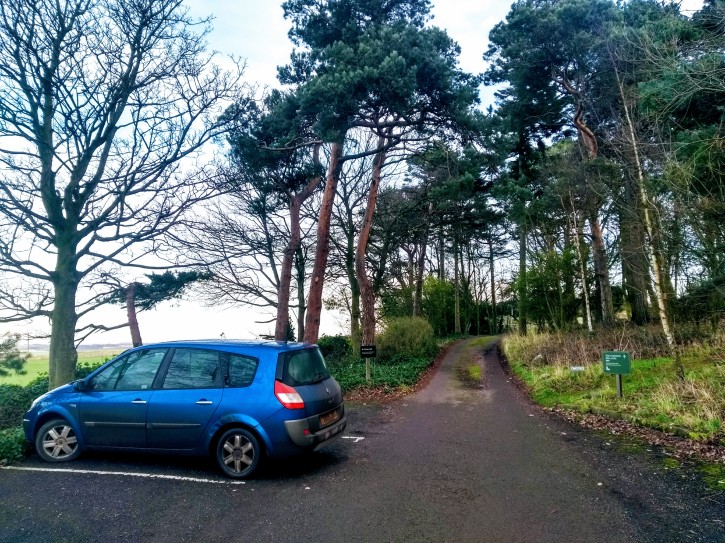
The best way to enjoy this walk is to not head straight for the hillfort along the path, but to veer right into the woodland. At this time of year the branches are bare & the air is insect free, which lent a real feeling of barren tranquility to the occasion.

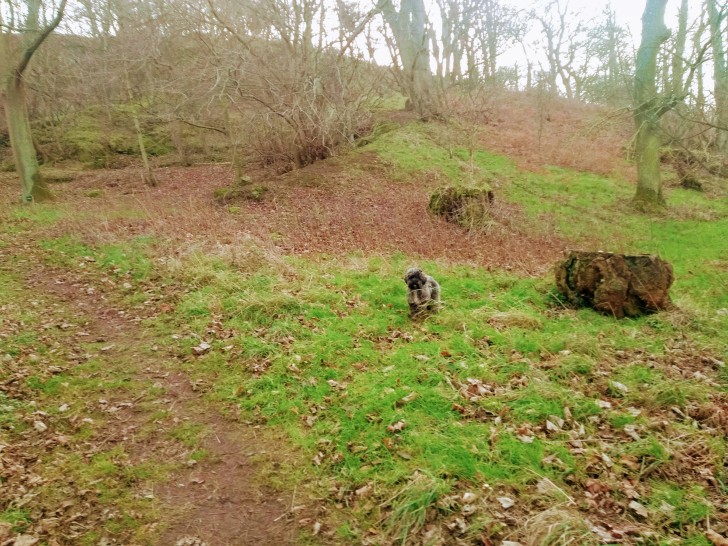

Passing up & over a gate, we enter’d a new field, with gorse on our left, while over the wall to the right sat a handsome blue tractor!


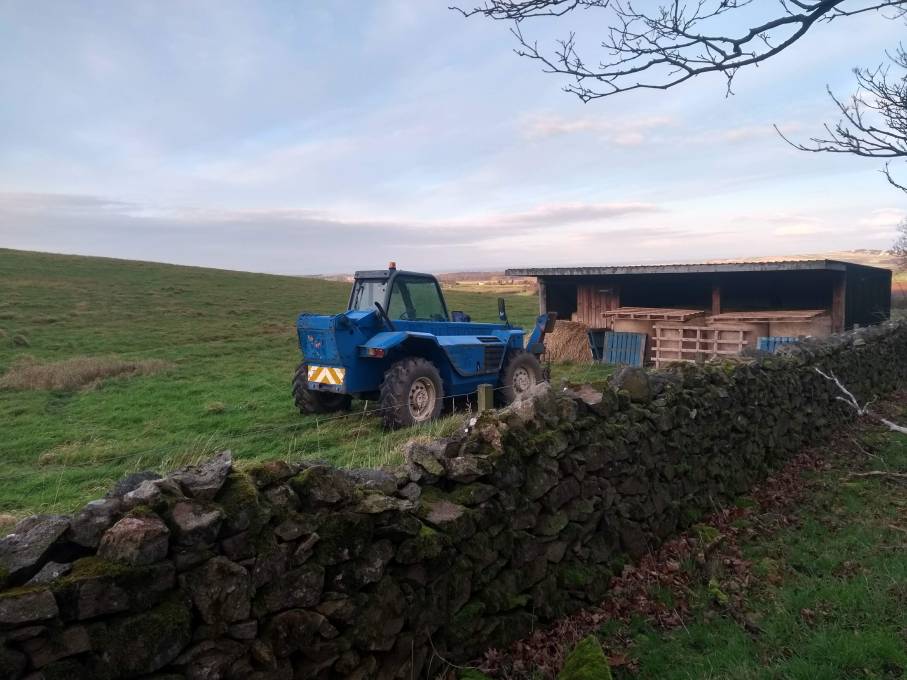
At this point we began to ascend a steepish slope to our left, with Daisy sniffing for rabbits as we went.I was loving the way the tree branches in this silent corner of the county were making weird webbing patterns against the sky.



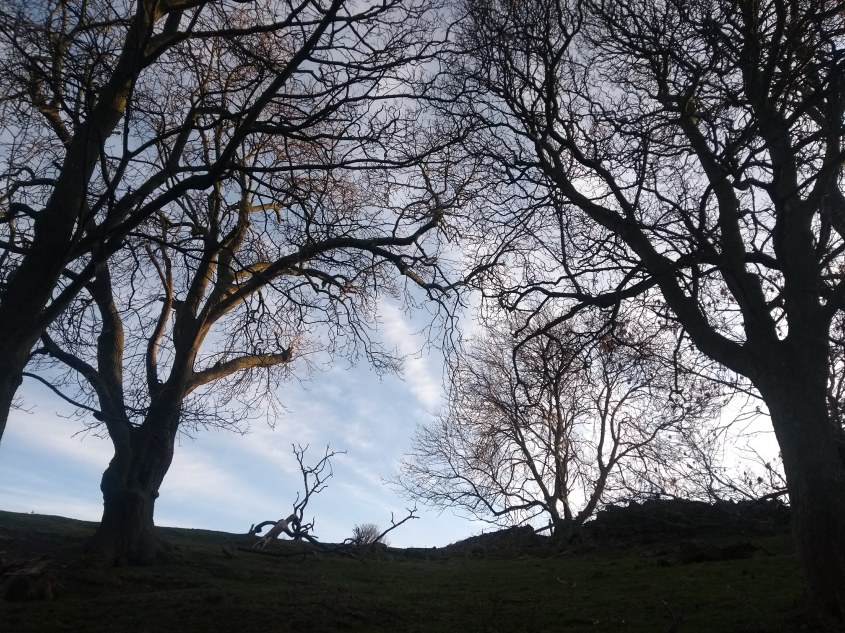

After a wee while we reached a fine plateaux, with splendid views all round. At the rough summit spot, one can make out Edinburgh, Fife, North Berwick Law, & even Torness Power Station in the far distance.
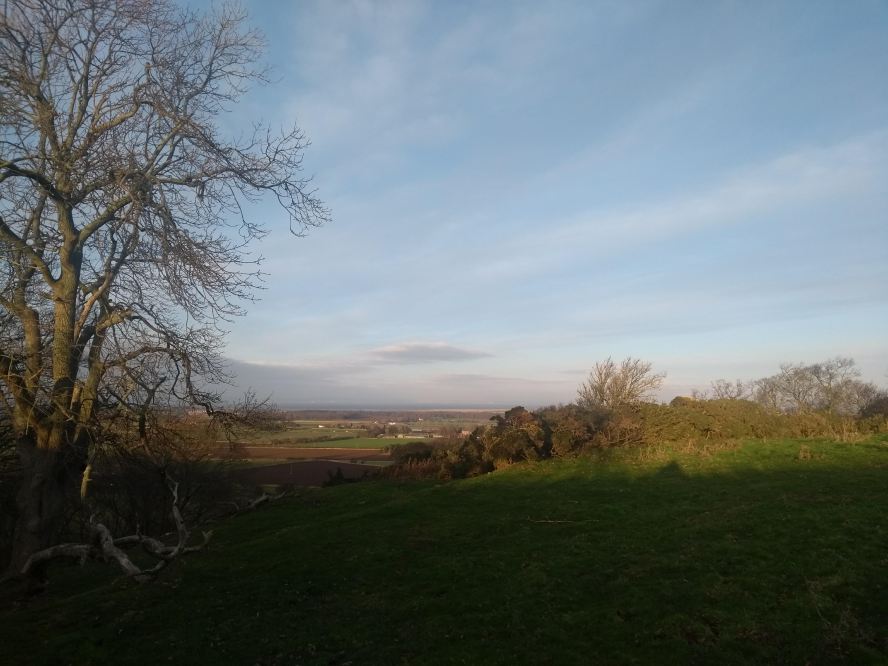


Crossing the plateaux to the NE – aiming for North Berwick Law – we reached a clumsy wall, thro’ a gap in which we found ourselves on a hillslope thick with gorse & paths. Here we had our first glimpse of the Chesters directly to the north, in which direction we paced our way down paths & through gorse.



Once we reached the valley bottom, we turned left, & headed towards a stile in the distance, over which we popped & did a U-turn of sorts in order to explore the hillfort to its eastern end.




What a joy; an excuisite circumvallating heap of vivid turf walls & defensive ditches, all lush-flush with hibernating grasses. The Chesters consists of two acres of atmospheric circles atop a conical eminence, but as a defensive position its a bit daft – an invading army could easily have slung rocks and arrows from the heights from whence we came earlier. But, it was heavily defended – perhaps it was an iron-age bank or something, protecting the treasures of the Gododdin chiefs. It was certainly very high-status, & as I have already stated, connected in some way to Dremrudd.



The quantifiably excellent vistas obtained from the Chesters were very much favored during the two World Wars of last century, in the capacity of an observation post. Just a couple of miles away lay RAF Drem, a vital chain in the protection of Britain, overlooking the waterways of the Firth of Forth with all of its crucial shipping. To protect Drem, an anti-aircraft gun emplacement was also established right on the Chesters.

During the Second World War, Drem was abuzz with different squadrons & planes – including Mosquitos & Hawker Hurricanes – piloted by an ever increasing array of internationals. The first edition of the Supermarine Spitfire flew from Drem in 1939 (A&B Flights of 72 Squadron), & 16 editions later, at the end of the war, they were still flying from Drem.

While stood on the Chesters, observing the merry meld of sky, sea, & land, I began imagining the dog-fighting scene during the first major air-battle over Britain of the Second World War. It took place on the 16th October, 1939, only 3 days after 602 Squadron had moved to Drem to bolster the defences around the Firth of Forth.
Thinking that the War would be over in a matter of weeks, the Germans had decided to attack the shipping at Rosyth, roaring in over the Lammermuirs & along the Forth in four waves of three Junkers Ju 88 bombers of the 1 Gruppe Kampfgeschwader. Taking the British air-defence completely by surprise, they scored some damage.
Spitfires from Drem & Turnhouse (Edinburgh) were scrambl’d to attack the raiders, resulting in the first two Luftwaffe bombers shot down, one of which was claimed by George Pinkerton of 602 at Drem. It was brought down off the May Island and two crew were rescued by a trawler; they were transferred to Military Custody at Edinburgh Castle where they were visted by George himself. A third plane was struck by ack-ack fire & limped through the skies to Holland, where it made a forced landing in which all the crew were killed.

Back at Rosyth, the cruisers HMS Edinburgh and HMS Mohawk, and the destroyer, HMS Southampton, had all sustained direct hits, but did not sink. 15 Sailors who were killed, was not released for many years. Some of the dead are interred in the Naval section of South Queensferry Cemetery.

In the early noughties, the BBC ran a sheme called ‘People’s War’ asking viewers to send in accounts of the war. From these I found Edward Thomson’s account of the attack, made in 2003.
I was a passenger on the Dundee section of an Edinburgh to Aberdeen train which had just entered the first arch at the Southern end of the Bridge. The next stop was to be Leuchars Junction. I was in the corridor with an older boy called Jack Thomas from Edinburgh. We were looking downstream to the right of the carriage and were trying to identify some of the fleet at anchor below the bridge. Almost simultaneously there was a giant waterspout as high as the bridge alongside one of the capital ships and a barge tied up alongside; it seemed to fly up in the air! In later life I discovered it was HMS Southampton. There were two or three other explosions further off and one of the ships was actually struck; it was HMS Mohawk and casualties were sustained on board.

Drem was a relative placid posting – with squadrons being rotated here from the wild SE corner of England. In November 1941, a member of 611 Squadron (West Lancashire) recorded his unimpress’d observations of arriving at Drem.
As compared with Hornchurch, Drem has a very long way to go. The men have four wooden huts in which to sleep (35 men to each) & heated by 2 coal stoves. Senior NCOs & Officers both have the old type messes. Dispersal point is situated along the south-west side of teh flying field. There are 5 wooden huts, 2 for pilots, 1 each for A- & B- flight’s ground crews & 1 for signal & armament personnel. Squadron HQ is on the opposite side of the flying field & is very reminscent of the wooden HQ which the Squadron had in pre-war days at Speke. It must be realized that Hornchurch has been completely modernized & everything is most up to date whilst here no modernization has been carried out yet
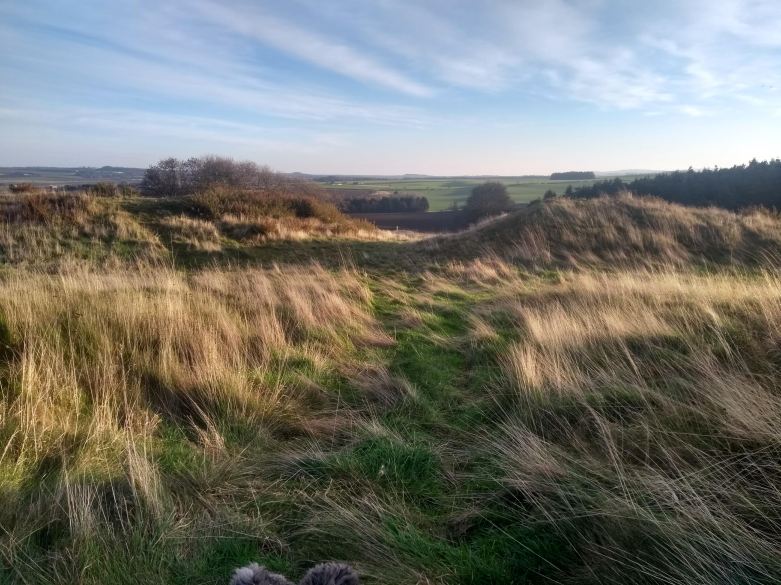
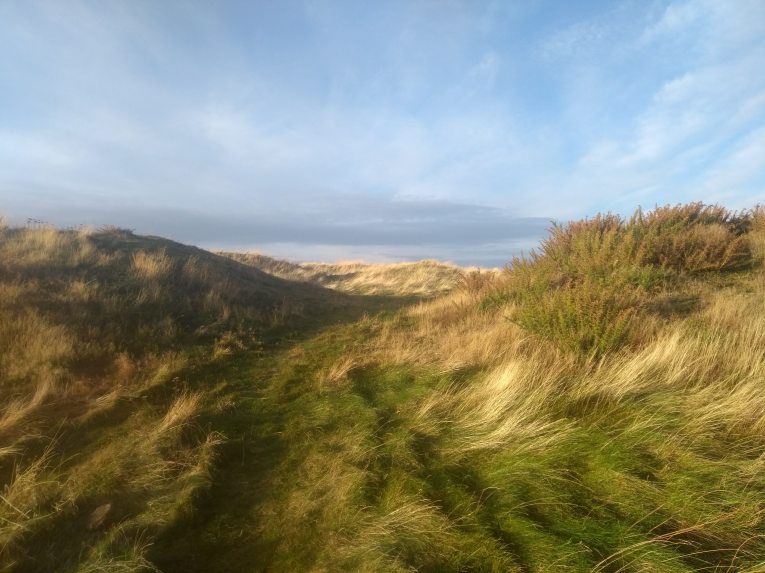
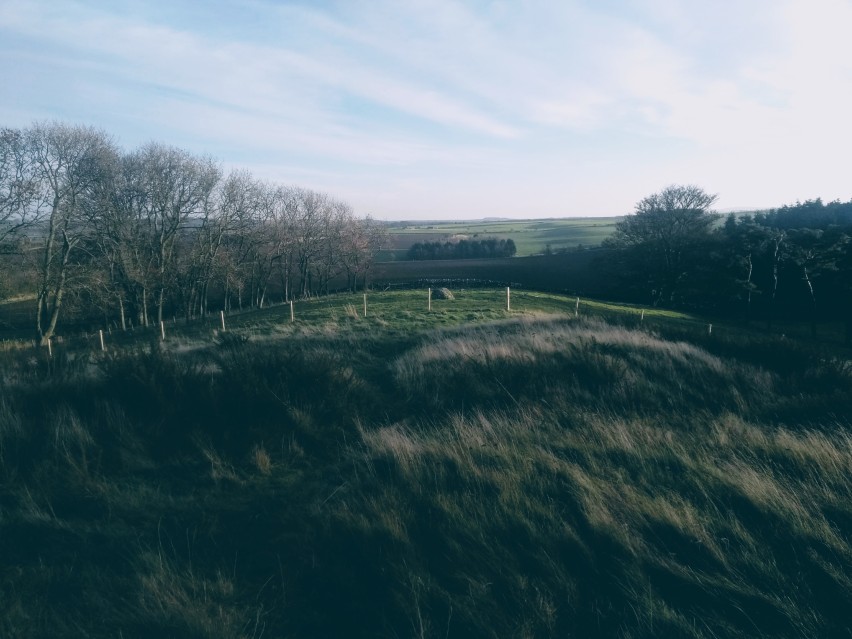
At the eastern end of the Chesters are the remains of a double gateway, through which me & Daisy bounced. We next came to a fortuitous hole in the fence, through which we went, turning sharply right & downhill. Then, it was a return to the valley, along which we went, this time passing the stile & reaching the sites information point.




It was then a wee potter back through the woods & to the car. We really enjoyed this walk. Its all a bit short, like, but its quiet & you can freely meander about a lot like a drunken spaniel, so make what you will of the occasion!

To contribute petrol & petfood
Please make a donation
***

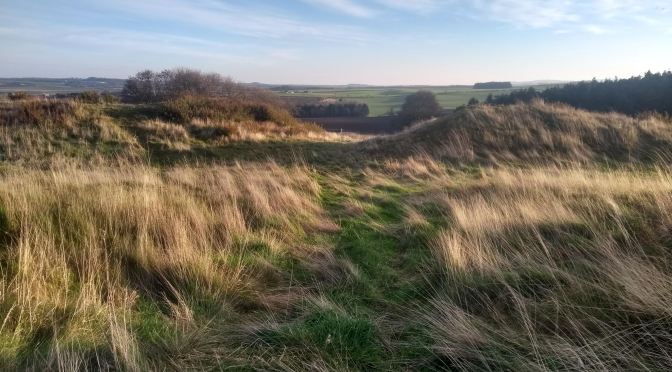

Love this blog. It’s a walk I have never considered or ever visited the Hill Fort. I will look again in the spring. Thanks
LikeLike
I enjoy reading the blog and especially the beautiful photos. Your walks might be compiled in a book! My Walks with Daisy . Well done! Loved the laced skies!
LikeLike